Tribou Park
While Tribou Park is one of the smallest parks in Woodstock, it is also one of the most visible. It is located at the junction of Central and Pleasant Streets, and those entering the Village from the East drive past it.
Before this tiny triangle of land became a park, it was used in a variety of ways, including - at various times - as the site for a home, wheelwright shop, and a school. To learn more, view the slide deck below.

Like most places, Tribou Park has a long and storied history.
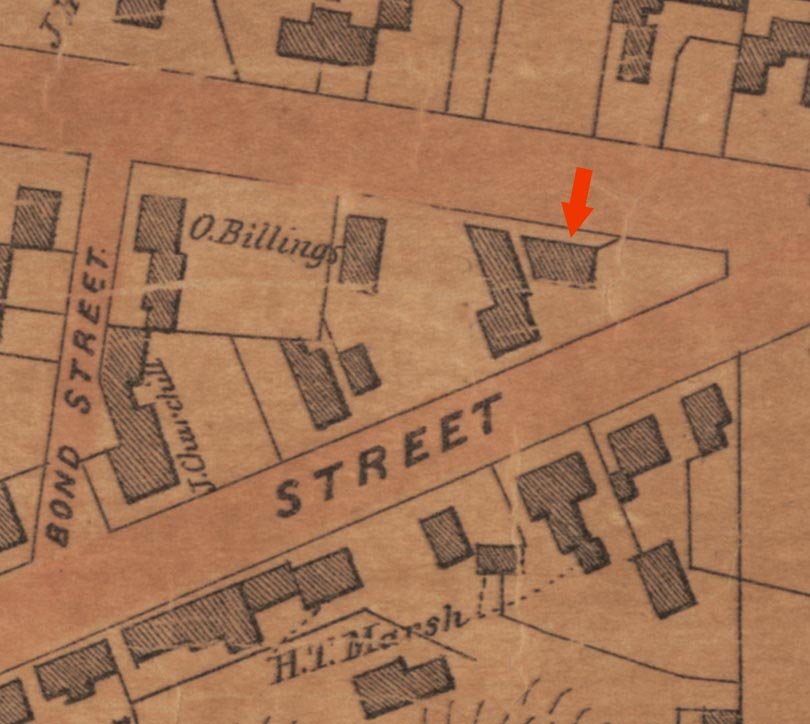
In 1817, John Blish purchased the property. On the site, Blish built a red shop that later was used as a schoolhouse.
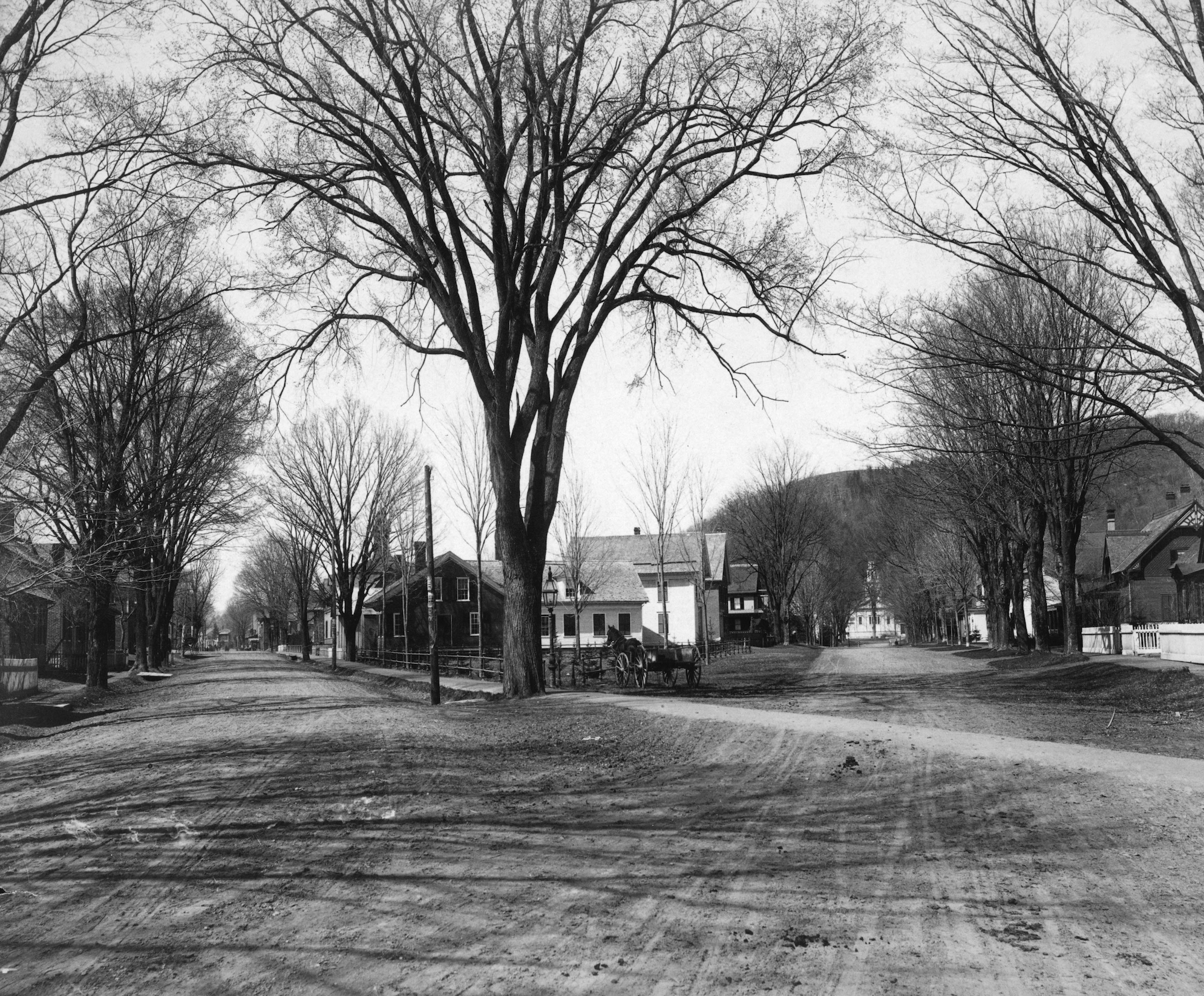
John Blish also helped to set out an elm tree around 1832 at the junction of Central and Pleasant Streets. By the time this photo was taken in the late 1800s, the tree was full grown.
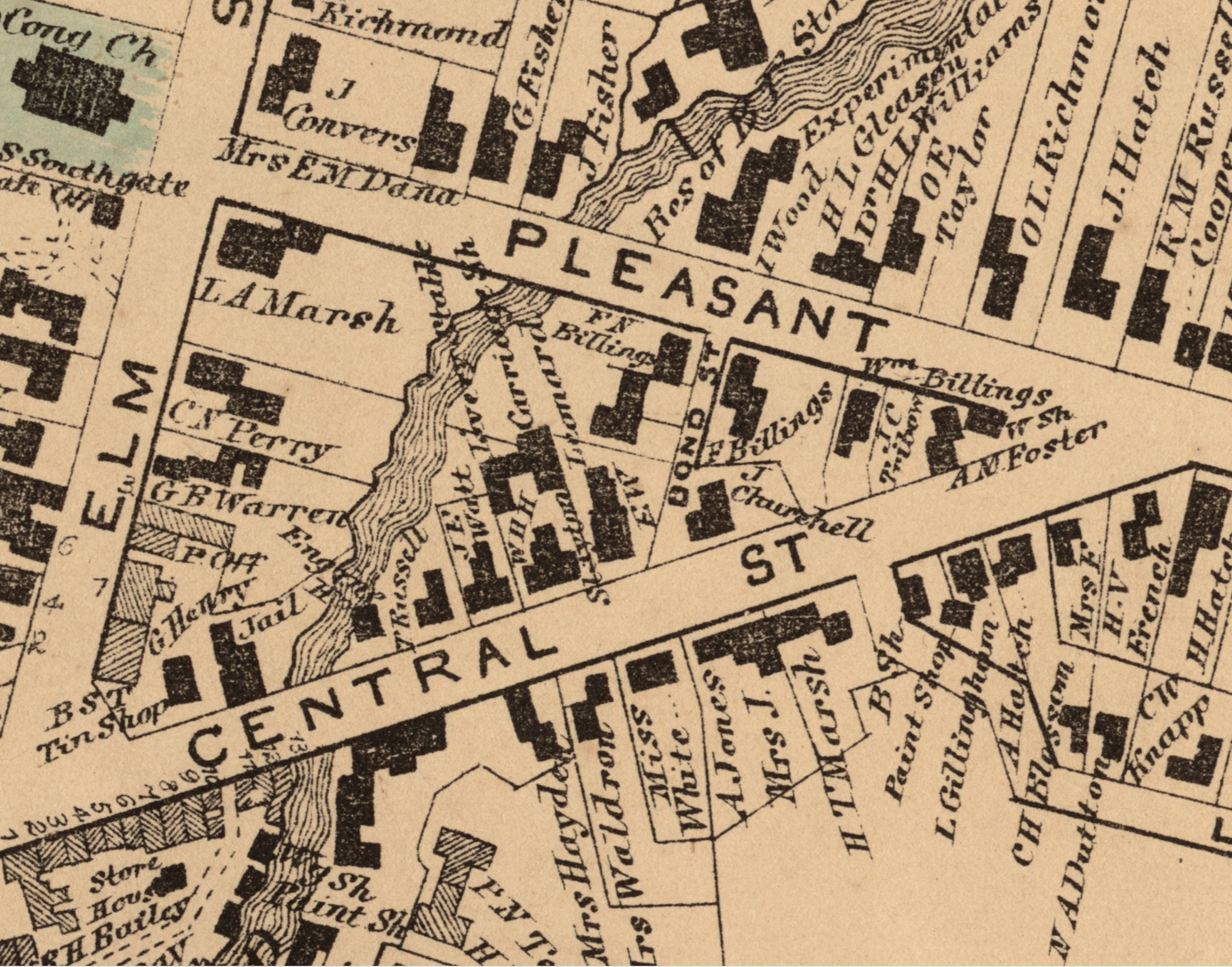
In 1845, Jonas G. Tribou purchased the land as well as the shop located on the site, which he used as both a dwelling house and a wheelwright-shop (marked “W Sh” on map).
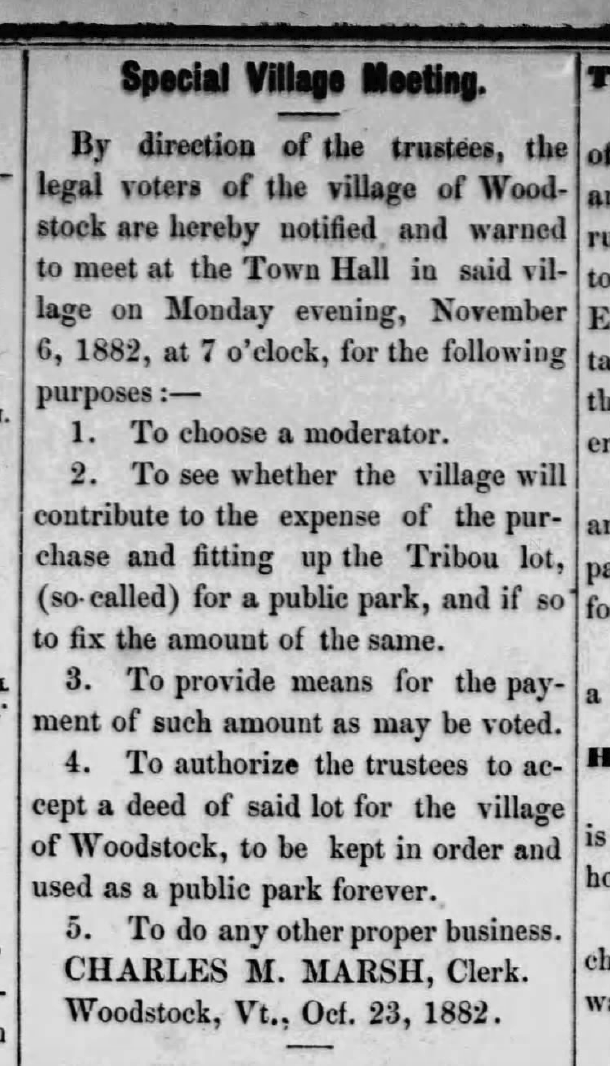
Jonas Tribou passed away in 1881. In October of 1882, it was agreed that the town of Woodstock would accept the land as a donation and turn it into a park.
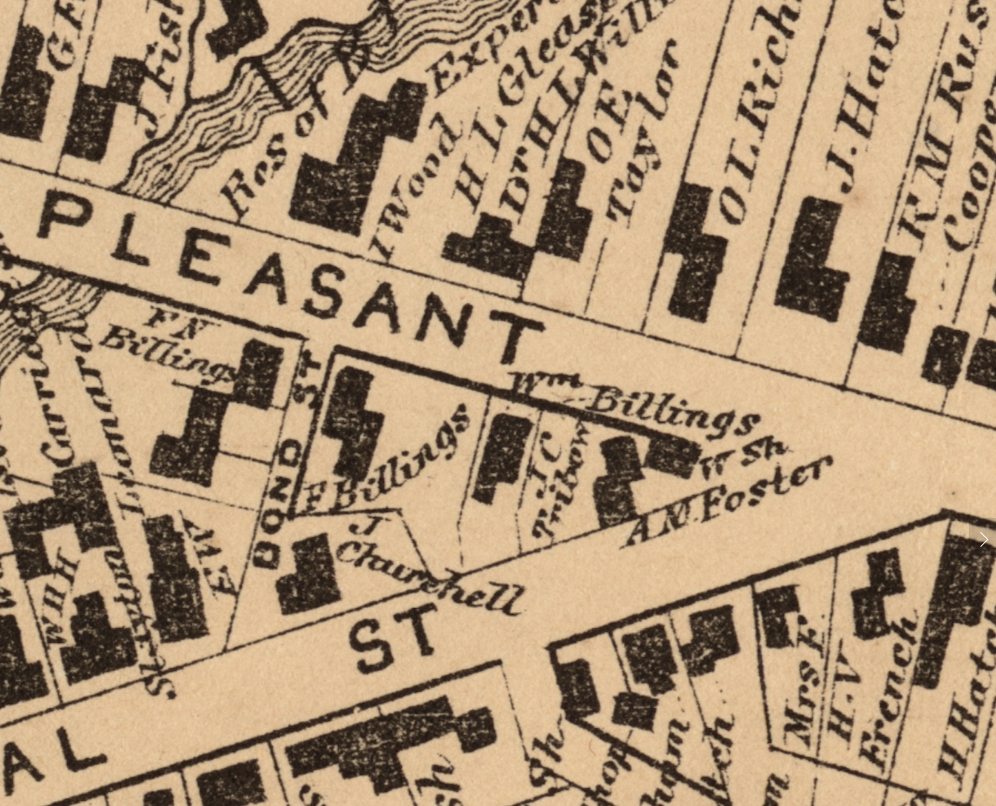
One of the first steps in transforming the area into a park was moving the wheelwright-shop at the eastern-most corner.

The shop was moved near the old Railway Depot. It was later converted into a barn. It is not known if the building is still standing, but there are several barns in that general location.
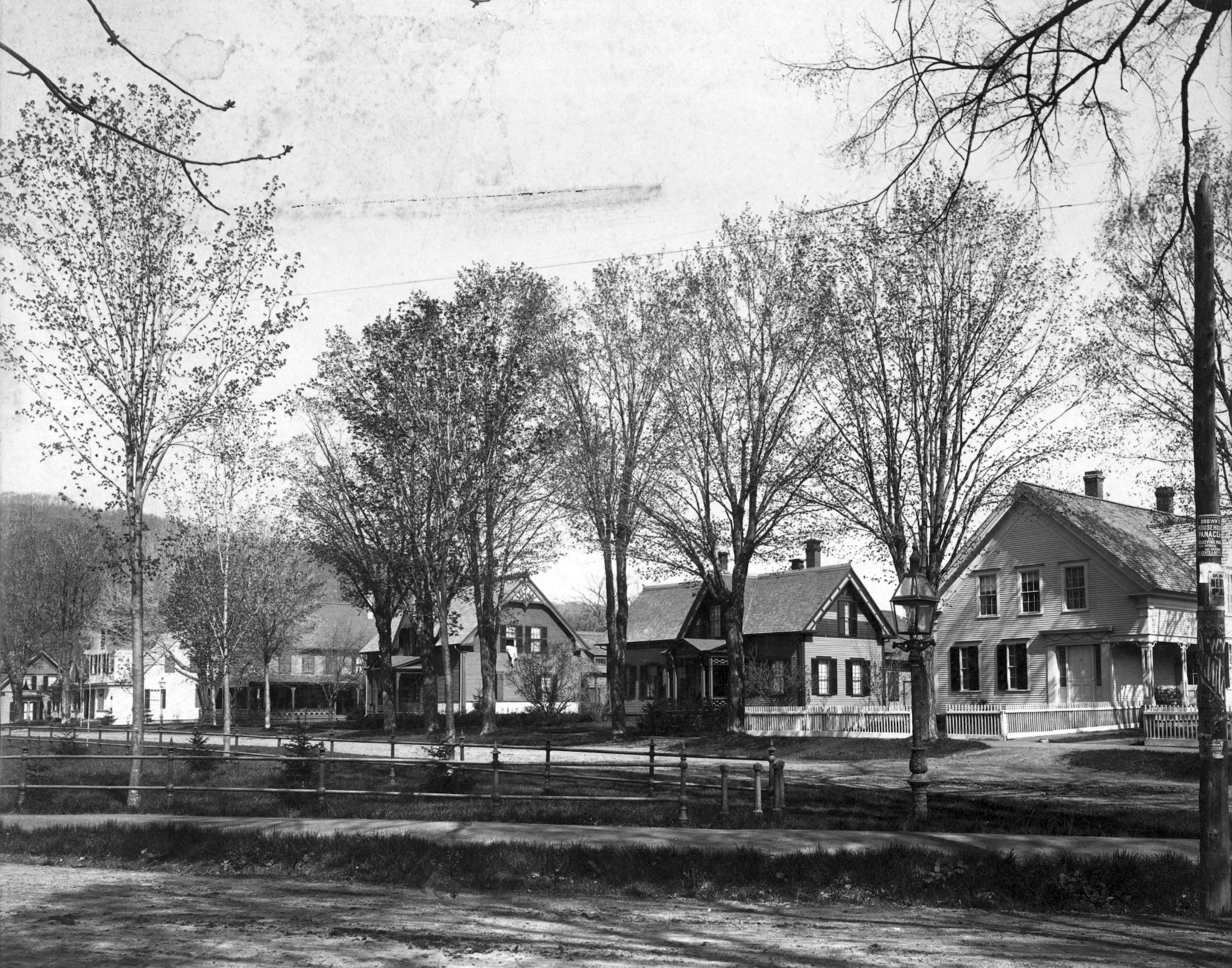
In addition to moving the shop, another change was putting up a fence around the park in 1883. This fence was of the same pattern as the fence around the Green.
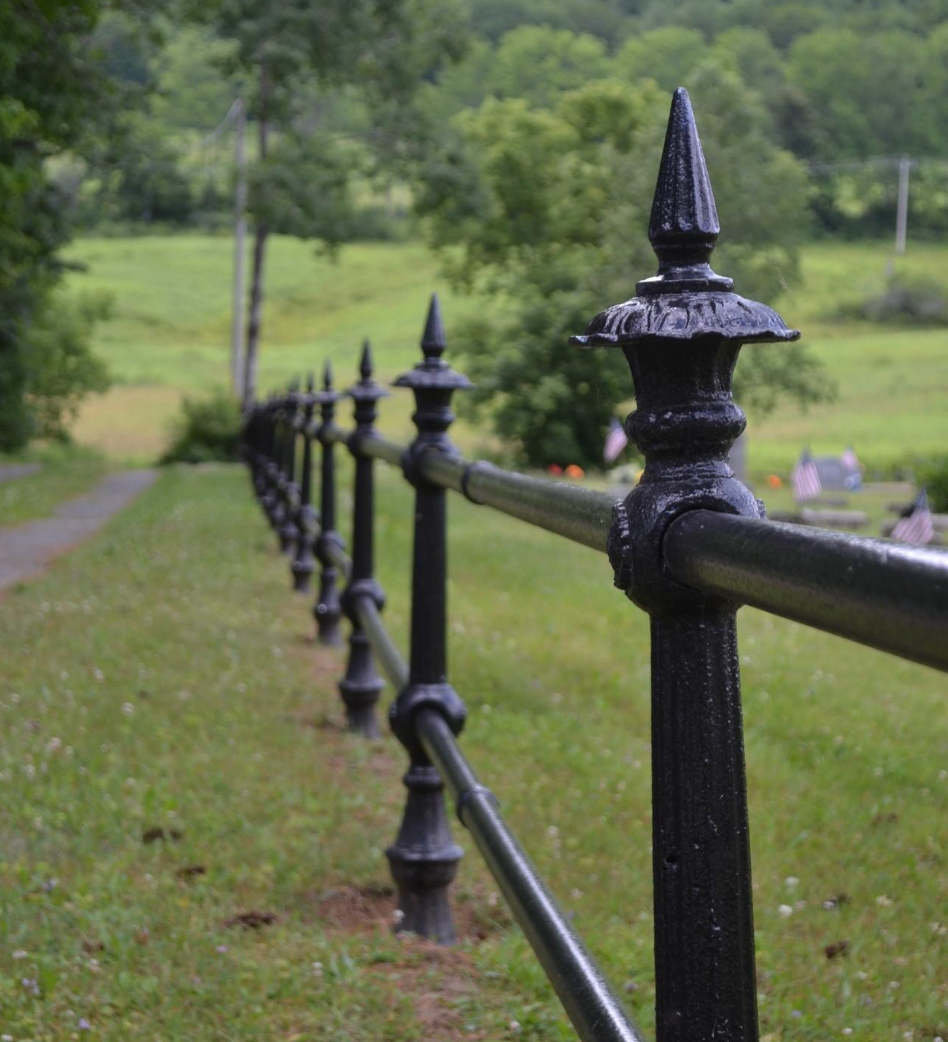
This park fence was later removed and erected at the Taftsville Cemetery.

Today, Tribou Park contains a Civil War cannon, a monument, and a flagpole.
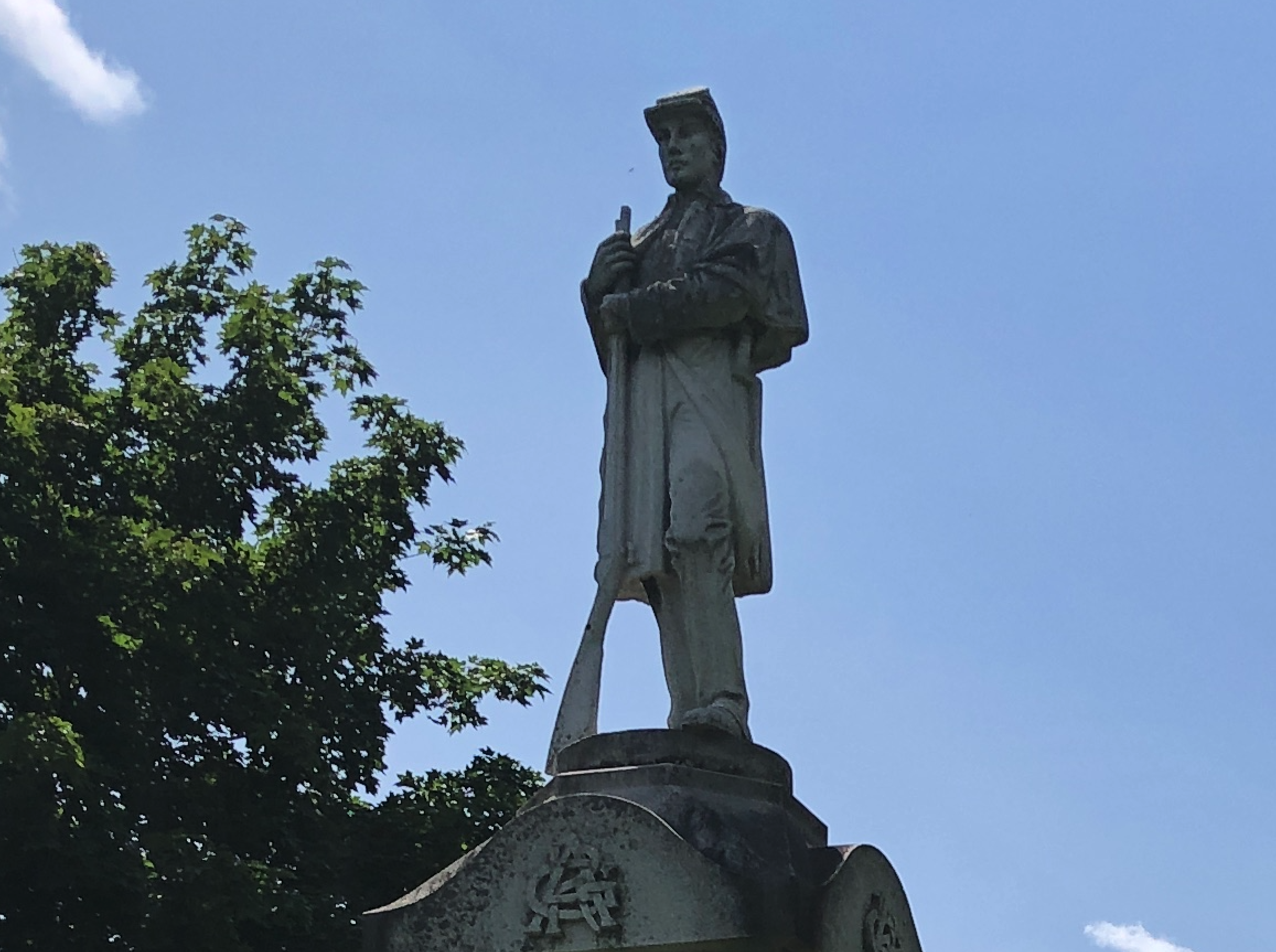
The monument features a soldier. The base is inscribed “In Memory/of the Boys of/Woodstock and/Vicinity who/Served in the Army/and Navy of the/Nation in the War/of the Rebellion/of ’60 to ’65.”
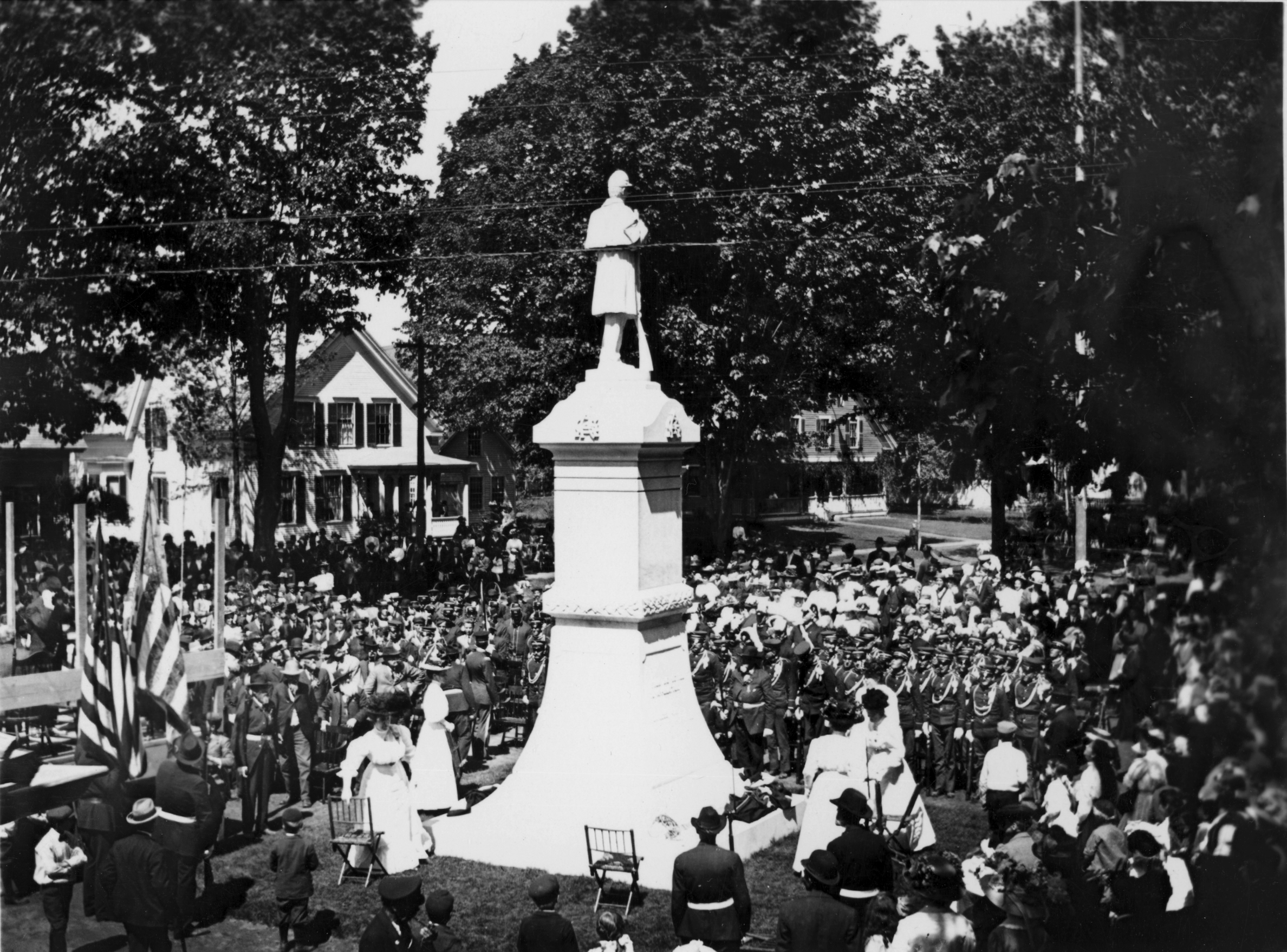
The dedication of this monument was attended by a large group of people in 1909 as shown in the photograph.

The cannon was installed in 1899. It weighs over three tons. A sum of $25 was raised to defray the expense of getting it to Woodstock, and it was mounted by the Randall Post, G.A.R.

In 1942, during WWII, some in Woodstock expressed their desire to have the “old gun” donated to the Salvage Drive, so it could be converted into wartime munitions. The letter was signed “A. Citizen.”
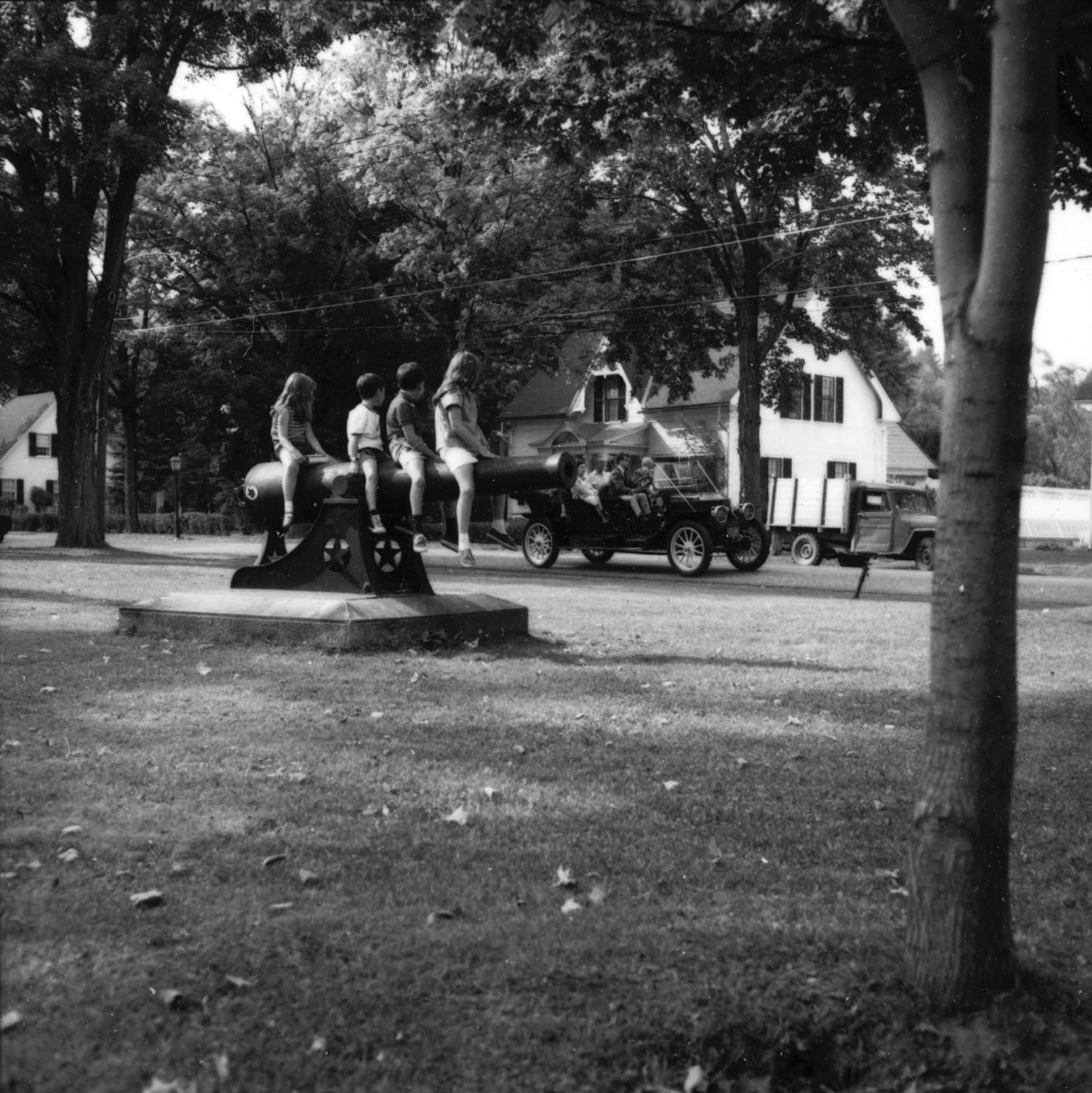
Apparently, the words of “A. Citizen” went unheeded, as the "gun" remains in the park.

Today Tribou Park is one of a number of parks within Woodstock Village where people can read, relax, and learn about Woodstock’s history.














